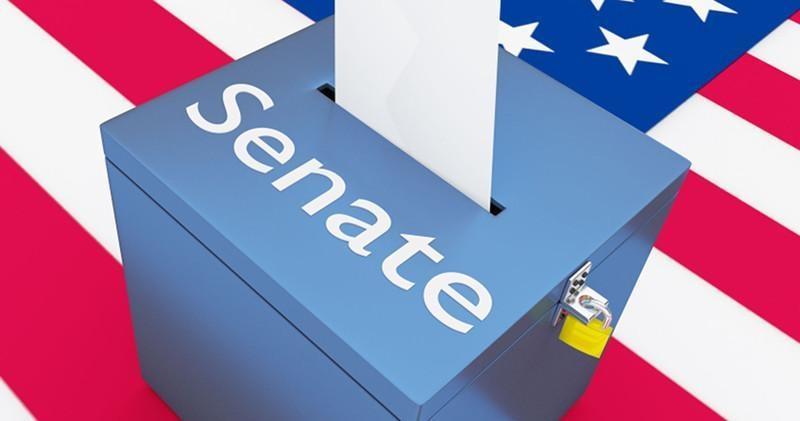
Twelve Republicans parted with President Donald Trump on his national emergency funding. But given the electoral politics of the Senate, it would be unwise to expect much crossparty voting in the future.
The partisan performance of a state is not the only consideration that Senators take into account when making decisions on policy. But whether political polarization is a cause of the current makeup of the Senate or a result of it, few Senators feel political pressure to part with their political party.
In the 116th Congress, 89 of the country’s 100 Senators belong to (or caucus with) the same party as their respective state’s 2016 presidential race winner: 51 Republicans represent states Trump carried, and 38 Democrats represent states Hillary Clinton carried. Just four senators who are up for re-election in 2020 represent the 2016 presidential winner’s opposing party.
That means when it comes to controversial legislation, there are few swing votes.
The 2016 election marked the first time that the Electoral College results matched individual Senate results in every state. In 2018, the results were more mixed. Seven Democrats (including six incumbents) won states that Trump carried in 2016. But the only Republican Senator who ran for re-election in a state that Clinton carried, Nevada’s Dean Heller, lost to Democrat Jacky Rosen.
Susan Collins and Cory Gardner are the only Republicans in the Senate who represent states that Clinton carried, and both are facing competitive elections in 2020.
On the other side of the aisle, two Democratic Senators who represent Trump states are up for re-election this cycle: Alabama’s Doug Jones and Michigan’s Gary Peters.
The remaining seven Democrats who represent Trump states just won re-election in 2018, meaning they have nearly six years before they have to face voters, should they choose to seek re-election. That class includes Sens. Bob Casey Jr. (Pa.), Debbie Stabenow (Mich.), Tammy Baldwin (Wis.), Joe Manchin (W. Va.), Jon Tester (Mont.) Sherrod Brown (Ohio), and Kyrsten Sinema (Ariz).
Senators who face pressure from the opposing political party tend to cross party lines more frequently, according to Georgetown’s Lugar Center - McCourt School Bipartisan index, a metric that measures how frequently lawmakers co-sponsor bills with members of the opposite party. Collins, for example, was the most bipartisan Senator in the 115th Congress, and Gardner ranked 8th of the 98 Senators analyzed. (Sens. Mitch McConnell and Chuck Schumer were excluded from the study.)
The most recent report rates members of the first session of the 115th Congress, meaning a handful of newcomers have yet to receive scores. But among the Democrats who represent Trump states who were Senators at the time, Manchin ranked 16th, Peters ranked 24th, and Tester ranked 39th. Further down the list, Baldwin ranked 54th, Casey ranked 57th, Brown ranked 61st, and Stabenow ranked 69th.
Of course, presidential elections aren’t the only indication of the partisan behavior of a...

